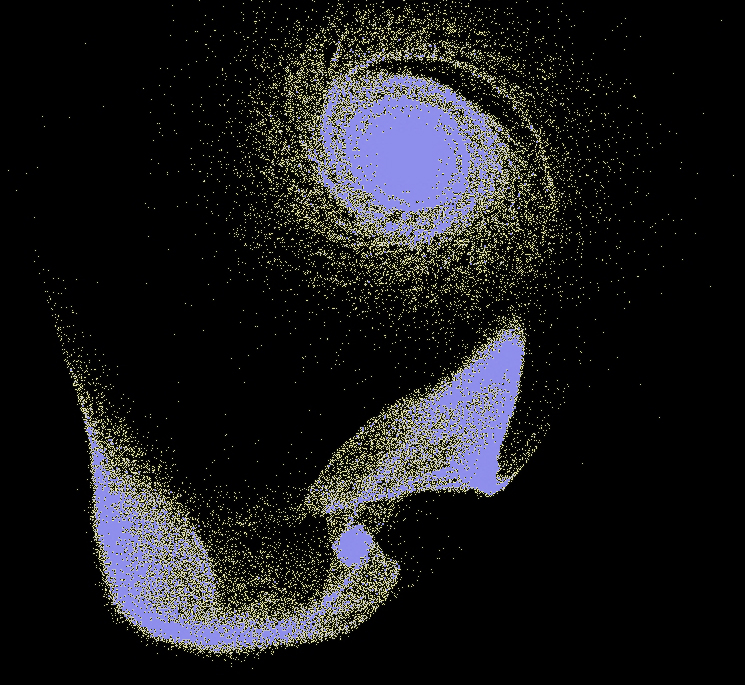Image List
-

D'Onghia and her colleagues simulated encounters between galaxies to determine how dwarf galaxies lose much of their stars and gas. Top Row: Interaction between a dwarf galaxy orbiting around a larger galaxy with 100 times its mass. Only the stars are plotted. The upper left panel illustrates the initial set up where the two dwarfs approach one another. The upper middle panel gives the state of the system after 2 billion years, and the upper right panel shows the appearance of the galaxies after 7 billion years. Bottom Row: Shown is the orbit of the same small galaxy (in white) around the Milky Way today (in yellow), which has 10,000 times its mass.
Elena D'Onghia (CfA) -

This simulation illustrates the resonant stripping process. Stars of a dwarf galaxy (at the bottom) orbiting around a larger system (at the top) are stripped off by gravity, forming long tails of stars.
Elena D'Onghia (CfA)